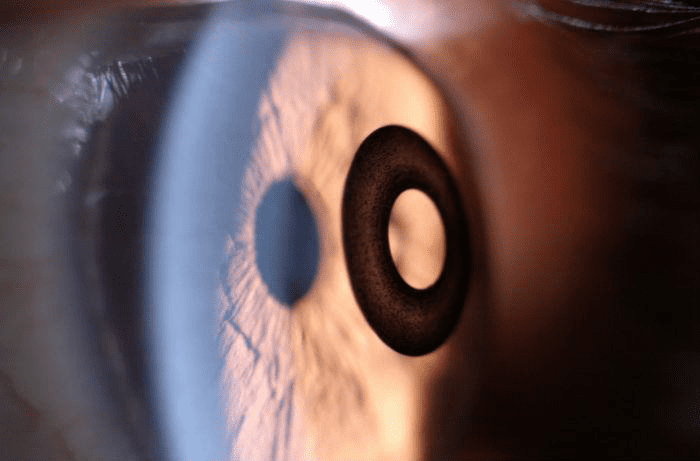
Procedures
Corneal Inlays
Home / Procedures /
Reduce Dependence On Reading Glasses
Corneal inlays are implanted in the cornea to treat presbyopia, an age-related condition that results in a loss of flexibility in the eye’s lens. Inlays result in more balanced vision and are the best long-term solution for presbyopia.
KAMRA™ Inlay
A Revolutionary Procedure
We’re proud to have been the first eye center practice on the West Coast to offer the KAMRA™ inlay eye surgery.

Condition Treated
About Presbyopia
Presbyopia is a common age-related vision condition that affects a person’s ability to focus on near objects or read small print. It is often referred to as “aging eyes” or “age-related farsightedness.” Presbyopia typically becomes noticeable in the late 30s or early 40s and continues to progress with age.
People with early presbyopia often notice they need more light to read, and have to hold reading material at arm’s length to focus. Eventually, presbyopia results in the need for reading glasses or bifocals/progressive lenses for all near vision.
Common Questions About Corneal Inlays
What is presbyopia?
Presbyopia is an age-related condition that results in the loss of flexibility in the eye’s lens. This decreased flexibility makes it difficult to read close-up objects like books and newspapers.
What inlay am I a candidate for?
NVISION offers the full suite of presbyopic solutions. Your surgeon will recommend what’s best for you.
How soon will I be able to resume normal activities?
For most patients, the full benefit of inlay is realized within one month post-procedure and others may take longer. Most patients return to normal activities as early as the day after their inlay procedure.
Will the treatment for presbyopia affect my distance vision?
The majority of patients who are treated for presbyopia find that their distance vision remains unaffected.
Will my presbyopia progress after a corneal inlay procedure?
Corneal inlays will typically last until cataracts develop, providing good reading vision. With or without a corneal inlay procedure, your eye’s lens will steadily become less flexible, and then more clouded.
What is the difference between the Raindrop® near vision inlay and KAMRA™ inlay?
Raindrop® patients tend to be mildly hyperopic, while KAMRA™ patients tend to be mildly myopic.
Take the Next Step to Clear Vision Today
For over 25 years, NVISION has been the trusted choice in custom vision correction. With 135+ locations nationwide and over 2.5 million procedures performed, our board-certified surgeons combine expertise with the latest technology to deliver exceptional care.
Your journey to better vision starts here.

Book Your Consultation
You're one step closer to life without glasses or contacts. Just answer a few quick questions about your eye exam, and we'll lock in your appointment.
Have a question? Give our experts a call!
877-455-9942